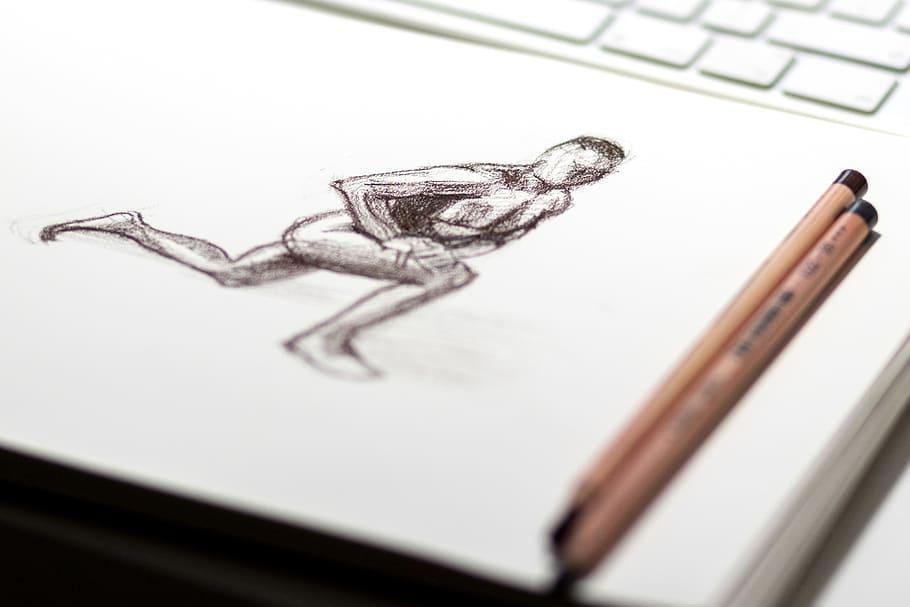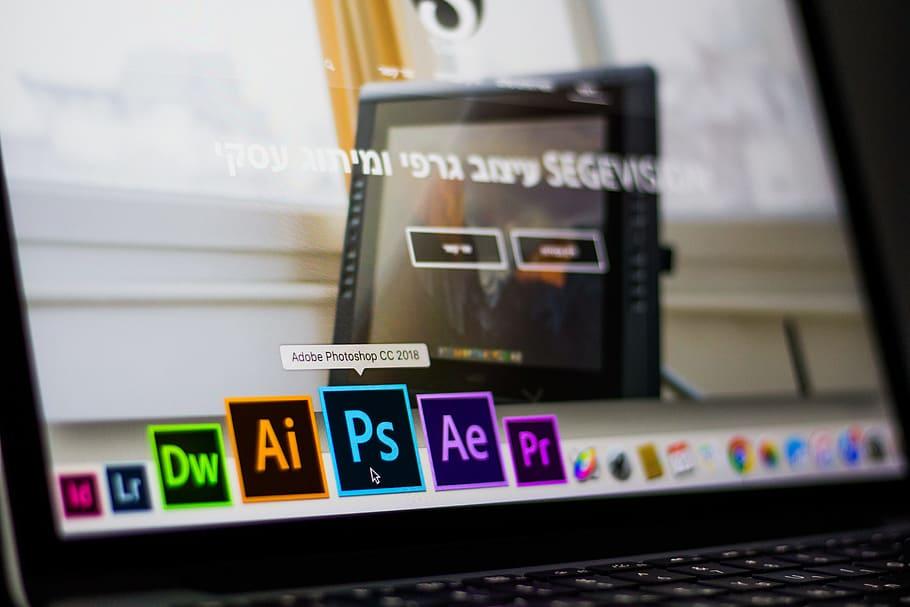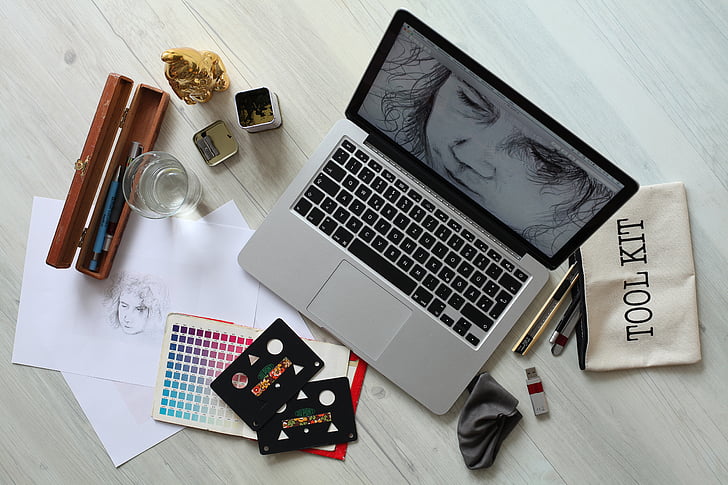Are you in love with the magnificent scenery and characters in video games or movies? They are all products of concept artists.
If you love working with these beautiful things, consider this career path. But how to become a concept artist? I will show you the nine steps needed on this journey. So, are you ready to bring your creative visions to life? Let’s get started!
Who Is A Concept Artist?
A concept artist is a designer who can create different forms of media. They help design visualizations to create artistic characters with different creative assets.
These experts make illustrations based on specific ideas so modelers and animators can produce them. The role of these experts is extremely important because they help shape the style for creating animations or video games.
Concept artists are needed in many sectors, such as graphic design, print publications, video games, advertising, etc. They have to follow the requirements when creating their art. Yet, they are free to use their creativity and personality.
Concept artists work with art teams in their company. Together, they work on visual styles. And they ensure the final product can satisfy all the requirements.

What Does A Concept Artist Do?
This job sounds interesting, right? And it really is. As a concept artist, I deal with many tasks a day. Yet, they are all exciting to me. Let me tell you what they are!
- Before working on the main product, I have to draw concept images. I work on many projects. Hence, my drawings can be used for many mediums like print ads, video games, or online marketing.
- I also create spec sheets to illustrate the dimensions and calculations of a concept. So, other artists and animators can understand my artwork.
- Sometimes, I present my concept art. Thus, I have to compose presentation packages.
- I work with the art team in my company. We often have meetings to brainstorm ideas.
- I help create materials and assets for the marketing team, too.
How To Become A Concept Artist?
This interesting job is not for everyone. If you want to pursue it, take the nine steps below:
1. Master the basics of painting & drawing
You will draw a lot when working as a concept artist. So, the first step is to grasp the fundamentals of painting and drawing.
Start by honing your hand control. You can practice different strokes like lines and curves. They are basic drawings, but they can form big things.
Next, work on forms and lines. Also, understand how they interact to create dimension and depth. Everything becomes more complicated at this step.
I started with simple objects. Then, I gradually worked my way up to more complex subjects. During this time, I also trained my eyes to perceive the world through structures and shapes. You can follow this path, too. It makes everything easier for you.
Then, as you progress, work on anatomy. It’s crucial for character design. Remember, don’t rush through this step. Just take your time to grasp each concept before moving forward.

2. Practice with tools
You need to practice with both traditional and digital tools.
Traditional tools
Most of your work is about digital tools. Yet, traditional ones can also help. When moving a pencil across the paper, I can feel a connection. It really engages my senses and inspires me.
So, even when you often use digital tools, try working with pencils. If possible, choose pencils from different hardnesses. Change the paper’s weight, too. You will surely be surprised when you find a perfect match.
Digital tools
Now, let’s talk about digital tools. They will be your best assistants, so be careful while picking them. To me, those tools are the most powerful:
- Illustrator: This graphic design software is famous for creating precise graphics. Thus, it’s my go-to tool for designing illustrations.
- InDesign: This tool focuses more on page and layout design. The robust typography allows for precise control over images and texts. So, when using it, you can easily establish a professional appearance.
- Photoshop: I like this tool, too, because of its versatility. It helps a lot when working with photography and digital art.
It would be best to try all of these three tools. Then, you can settle on your favorite. And don’t hesitate to explore other options, too.

3. Build a portfolio
A portfolio keeps all your projects. Thus, a standout portfolio is crucial when applying for a concept artist job.
You need to choose the right work. You may have created a lot of artwork, but do not stuff your portfolio with all of them. Instead, pick the pieces that demonstrate your strengths and versatility.
Remember to update your portfolio, too. Even seasoned artists have to add new projects to enrich their portfolio.
You can attach your portfolio to your resume. Each project should come with a short description. Then, your potential employers know the project’s concept and story.

4. Create your website
You can also upload your portfolio online. This task seems complicated, but you can pull it off with a few tips.
Choose the best platform
First, you need a user-friendly platform to showcase your work. These options are the best for concept artists:
- Portfoliobox: There are many pre-built templates and themes on this platform. Thus, you can quickly set up your own space there.
- Crevado: This platform is free and offers many features. However, you can’t use a footer for your website unless you are a pro member.
- Artstation: I love the custom domain on this platform best. There are also many templates and themes to choose from. Plus, the Artstation community is big. So once you’ve reached here, you can see products from other artists.
Stick to simplicity
When designing your website, simplicity is vital. Remember, you are a concept artist, not a graphic designer. So you don’t have to build a complex website.
The idea is to build a user-friendly platform. It should be easy to navigate so your viewers can check your artwork comfortably.
In addition, do not add too many filters or elements to the website. Your artwork should be the center of attention.
Reflect your style
Your website can be simple but do not make it dull. Instead, it should reflect your personal style.
So, you can choose graphics and colors that resonate with your artistic identity. For example, if you often work with peaceful-looking objects, set a gentle tone for your website.

5. Start networking
Who you know in the industry is as important as what you know. Thus, try to build a strong professional network.
Once you know experts in your field, you can easily learn from their experience and expertise. They may even give you job opportunities.
But how do you build your network? Well, you can join platforms like Facebook, Twitter, or Instagram. Then, share your work, comment on others’ posts, and start conversations. Potential employers may notice your talent.
You can also attend events or workshops. Many experts go there for the same purpose of networking. So be part of them and join the conversations.

6. Build soft skills
Of course, you must be excellent in technical skills like visual development, graphic design, anatomy, etc. Yet, do not forget soft skills.
- Creative skills: As a concept artist, you should think outside the box. This way, you can come up with many unique ideas for your art.
- Communication skills: You have to convey your ideas to your colleagues and directors. Then, listen actively to their feedback. All these tasks need good communication skills.
- Attention to detail: A tiny adjustment can change your product. Thus, train yourself to pay attention to detail, ensuring every element contributes to the overall design.

7. Get some experience
Experience is super important for your future job. There are three ways to gain experience:
Internships
I started my journey as a concept artist through an internship. In my old company, I had a chance to work on real projects. I could also learn from experienced artists. And you know what? I improved a lot in just several months.
You can look for internship chances at companies or studios. But ensure they align with your interests.
School projects
Don’t overlook the power of school projects! These assignments help you put your skills into practice.
So, treat those projects as the ones you will do as a concept artist. You can even push your creative boundaries while working on those small exercises.
Work in other positions
Interestingly, my first full-time job was not as a concept artist. After the internship, I applied for a graphic designer position.
During this time, I learned a lot about digital tools and visual communication. The experience then gave me a solid background in working with concept art.
Remember, every experience counts. So whatever you choose, be serious about it, and try to absorb as much as you can. Then, it will become a stepping stone towards your dream career.

8. Apply for jobs
Now, with enough experience, you can apply for a concept artist job. Here is some advice based on what I realized from my first application:
- Keep updating job openings on job search websites like LinkedIn and Glassdoor.
- Engage with the industry professionals in your network to seek opportunities.
- Before applying, choose pieces from your portfolio carefully. They should match the specific job requirements.
- Research the company or studio. Then, you can understand their project, artistic style, and culture.
- Write a compelling cover letter to express your passion for the job. Explain your skills and experience in the letter, too.
- Search for common interview questions and practice answering them.
- After the interview, send a thank you letter to show your gratitude for this opportunity.
You may face rejections in the first trials. But fear not! We all have this experience. Just refine your portfolio, stay positive, and be persistent! Even when it fails, each application is a lesson.
If you can’t start right with a full-time job, consider working as a freelancer first. Your freelancing projects can be important parts of your portfolio.
Plus, you will gain a lot of experience as a freelancer. Then, you will stand out more when applying for a full-time position.
9. Keep learning
My last advice is to keep learning. The art world is dynamic. New tools and techniques emerge constantly. As a concept artist, you have to dedicate time to learning and honing your skills. It’s the best way to stay competitive.
You can take online certifications. Most of them don’t last long. Yet, you can learn many interesting things about your job.
Online tutorials are a good idea, too. Although you don’t earn any certifications, you can still work on your skills through those materials.

Salary and Job Outlook
The demand for concept artists is increasing. You can see mediums in video games and movies. They are the work of concept artists.
Hence, companies and studios keep searching for skilled artists. They don’t even mind paying more to attract top talent. In the US, concept artists can earn about $98,191 per year (in 2023).
Why Should You Become A Concept Artist?
Well, it depends on your ability and interest. To perform well as a concept artist, you first need a passion for art and visual storytelling. Then, you must have the ability to turn your ideas into artwork.
This position requires other skills, too, such as communication and creativity. With all of them, you will surely shine.
Is It Hard To Become A Concept Artist?
Yes. Becoming a concept artist demands a lot of hard work. You should also have artistic talent as a background for your development.
But don’t worry! While it may be challenging, you can still succeed with dedication and practice. Your passion also plays a vital role here.
Final Thoughts
The journey of a concept artist is dynamic. To excel in your role, you must hone your skills, expand your network, and gain experience.
But trust me! The results will be rewarding! So, let your art grow with you! With dedication, you can soon become an excellent concept artist.
